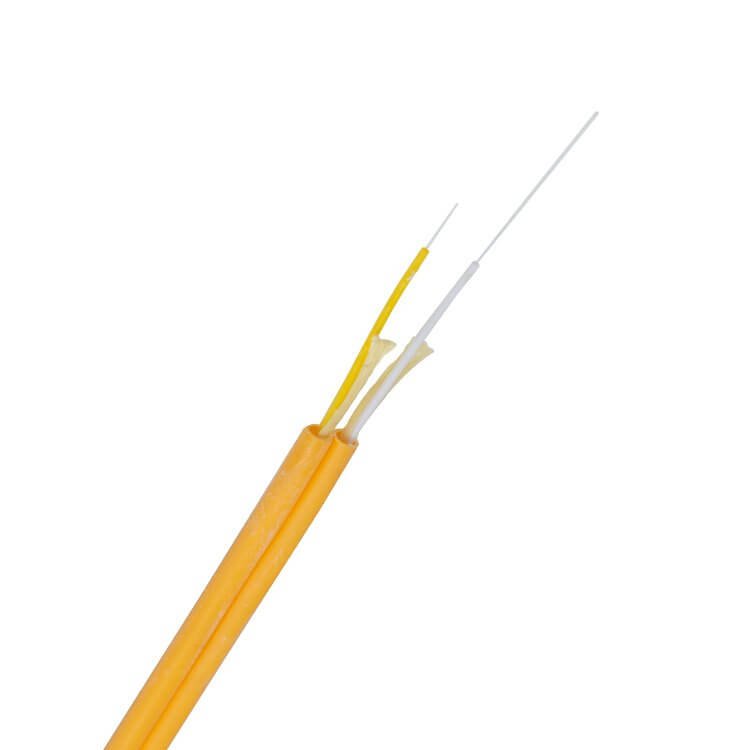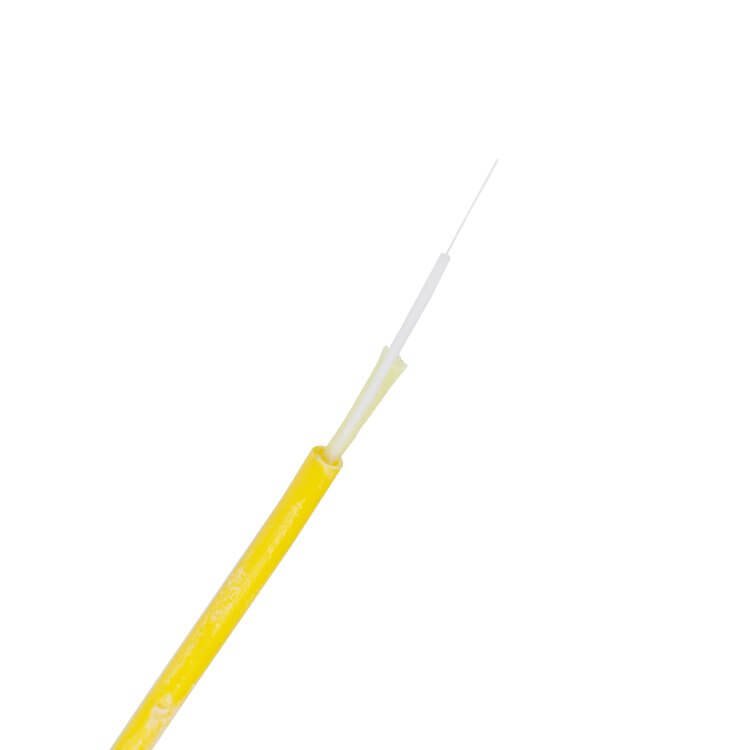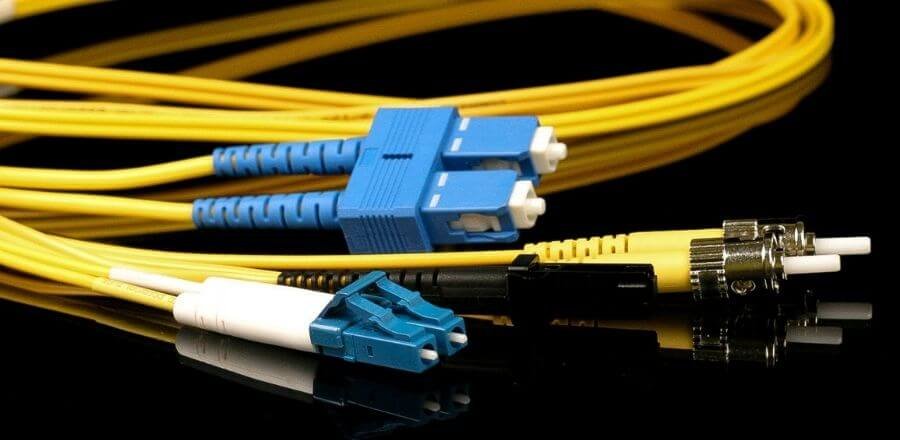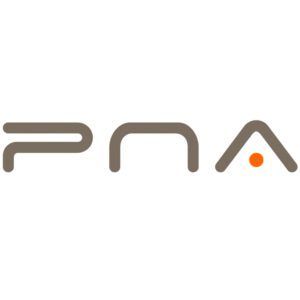Fiber patch cord is used to make jumpers from equipment to fiber optic cabling network. There is a thicker protective layer outside the optical fiber.
It is generally used in the connection between the optical media transceiver and the terminal box, and some fields such as optical communication systems, optical fiber access networks, optical fiber data transmission, and local area networks.
Patch Cable Diameter
The 0.9, 2.0, and 3.0 of the fiber optic patch cord are used to distinguish the outer diameter of the optical cable. 0.9 means the outer diameter of the fiber optic cable is 0.9mm, 2.0 means the outer diameter of the fiber optic cable is 2mm. And 3.0 means the outer diameter of the fiber optic cable is 3mm.
Single Mode vs. Multimode
At the same time, there are single-mode fiber patch cord and multi-mode fiber patch cord. Normally, single mode is indicated by yellow fiber cable jacket, and multimode is indicated by orange fiber cable jacket. As for transmission distance, the fiber optic patch cord is the same as fiber optic cable, which single mode has longer transmission distance and multimode has shorter transmission distance.
Fiber Pigtail
The fiber patch cord has connector on both ends, how about fiber patch cable that only has connector on one end? This kind of fiber patch cable is called fiber pigtail.
The other end is a broken end of an fiber cable core, which needs to be connected to other fiber cable cores through fusion splicing. The fiber optic pigtail often appears in the fiber optic terminal box and it is used to connect the fiber optic cable to the fiber optic media transceiver.
Fiber Connector
Fiber optic connectors are also available in many types, and they cannot be used mutually. The SFP module is connected to the LC fiber optic connector, and the GBIC is connected to the SC fiber optic connector. Normal connectors are FC, SC, ST, MU, LC, MT, E2000, and MTRJ.
FC Connector
The external strengthening method is a metal sleeve, and the fastening method is a turnbuckle. Generally used on the ODF side (most used on the distribution frame)
SC Connector
the connector for connecting GBIC optical module or ordinary optical fiber transceiver. Its shell is rectangular, and the fastening method is plug-in bolt type, without rotation. (Most used on router switches)
ST Connector
commonly used in optical fiber distribution frame, the shell is round, and the fastening method is turnbuckle. (For 10Base-F connection, the connector is usually ST type. Often used in optical fiber distribution frames)
LC Connector
The connector for connecting SFP modules, which is made of easy-to-operate modular jack (RJ) latch mechanism. (Routers are commonly used)
The application of different fiber end face mainly depends on the type of adapter. Generally, FC is used in ODF frame, SC is used in equipment optical port, and ST is used in local area network and radio and television.
Fiber End Face
PC refers to physical contact, which is also close contact. According to the difference in return loss, connectors are divided into PC, SPC, UPC and APC.
PC, UPC, SPC
SPC refers to super physical contact, and UPC refers to ultra physical contact. The industrial standard of PC, SPC and UPC return loss are -35dB, -40dB and -50dB respectively (Return loss refers to the proportion of light reflected by the end face of the connector. The smaller the return loss, the better. Of course you can also say that the larger the return loss, the better, regardless of the negative sign in front).
Different connectors cannot be mixed in principle, but the fiber end faces of PC, SPC and UPC are all flat, and the difference lies in the quality of grinding. Therefore, the mixed connection of PC, SPC and UPC will not form a permanent physical damage to the connector.
APC
APC is completely different. Its end face is ground to an angle to reduce reflection. Its industry standard return loss is -60dB. The APC connector can only be connected with APC. Since the structure of APC is completely different from that of PC, if an optical adapter is used to connect these two connectors, the fiber end face of the connector will be damaged.
The only way to connect APC to PC is realized by the fiber optic patch cord that converts from PC to APC. In addition, it should be noted that the APC connector is usually green, and the human eye can see the tilt of the fiber end face.
APC connectors are usually green, and UPC/PC connectors are blue. Common connectors are FC/PC, SC/PC, SC/APC, and LC/PC.
Simplex vs. Duplex
A duplex fiber optic patch cable can be regarded as composed of two simplex fiber optic patch cable of the same specification.




When transmitting signals, the simplex fiber optic patch cord transmits two-way synchronously with one fiber core, and the duplex fiber optic patch cord send and receive signals in separate fiber core.
The advantage of the simplex fiber optic patch cord is it saves costs and application resources. And the advantage of duplex fiber optic patch cord is its high reliability.
Fiber Optic Adapter
With fiber connector on both end, fiber optic patch cord will connect the equipment or fiber optic cables by using optical adapter. Fiber optic adapters are used for the conversion of various fiber optic equipment and fiber optic connection methods.
With the wide application of fiber optic adapters in fiber optic connections, there are various fiber optic adapters. So they can have different interfaces to choose from to meet the installation requirements of different environments. Common types of adapters are: LC adapter, FC adapter, SC adapter, ST adapter, E2000 adapter, MTP / MPO adapter, etc.


